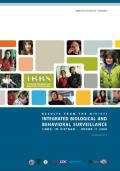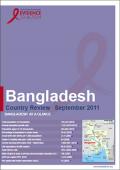Publications on People Who Inject Drugs (PWID)

Resource | Publications,
An explosive HIV epidemic among PWID exists in Cebu City. In 2008 HIV transmission was primarily due to sexual contact (90%), but by 2012 it was injecting drug use (77%). The 2011 biological and behavioural surveillance in Cebu City reported HIV prevalence among PWID to be 54%, with Hepatitis C prevalence reaching 94%.

Resource | Publications,
There are various risk factors that can affect young people, such as living in a neighbourhood where drug dealing and drug abuse are taking place and where out-of-school activities are not available. Economic strain on families where parents struggle to meet living costs can influence family relationships negatively, while spending time with peers who are involved in drugs or delinquency while seeking adventure puts young people at higher risk of falling prey to drug abuse.

Resource | Reviews and Snapshots,
Since the first case of HIV was detected in 1986, HIV prevalence in Brunei Darussalam has remained at <0.1%; however, the number of cases continues to grow and, by the end of 2009, a cumulative total of 56 cases of HIV had been reported together with 11 new cases of HIV for that year alone.












